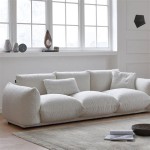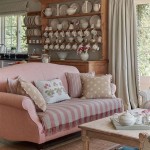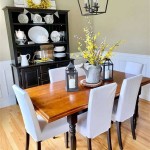Medical Home Decor: Enhancing Patient Well-being Through Design
Medical home decor, a burgeoning field, focuses on creating living environments that cater to the specific health needs and comfort of individuals managing medical conditions within their homes. It moves beyond mere aesthetics, integrating functional design principles that can positively impact a patient's recovery, mobility, mental well-being, and overall quality of life. This approach considers various factors, from accessibility and safety to promoting a calming and restorative atmosphere.
The importance of a well-designed medical home environment is increasingly recognized by healthcare professionals, caregivers, and patients alike. Traditional home designs often present challenges for individuals with mobility limitations, chronic illnesses, or sensory sensitivities. Simple tasks can become difficult, leading to frustration and hindering independence. Medical home decor addresses these challenges by incorporating adaptive solutions that promote autonomy and ease of use.
Effective medical home decor requires a holistic understanding of the patient's medical condition, their functional abilities, and their personal preferences. It involves a collaborative approach, often involving healthcare providers, occupational therapists, interior designers, and the patient themselves. The goal is to create a space that is not only visually appealing but also supports healing and promotes a sense of normalcy.
Accessibility and Safety Considerations
One of the primary goals of medical home decor is to ensure accessibility and safety throughout the living space. This involves modifying the home to accommodate assistive devices such as wheelchairs, walkers, and canes. Ramps can be installed to eliminate steps, doorways can be widened to improve maneuverability, and grab bars can be strategically placed in bathrooms and other areas where support is needed. Flooring choices are also crucial; non-slip surfaces minimize the risk of falls, while smooth, even flooring makes it easier to navigate with mobility aids.
Bathroom modifications are often a key component of medical home decor. Walk-in showers or tubs eliminate the need to step over a high threshold, reducing the risk of falls. Adjustable showerheads and handheld sprayers enhance convenience and independence. Raised toilet seats provide added comfort and support. Grab bars, strategically placed near the toilet and shower, offer stability and prevent slips.
Kitchen modifications can also significantly improve accessibility and safety. Adjustable-height countertops allow individuals in wheelchairs to comfortably prepare meals. Pull-down shelves and rotating organizers make it easier to reach items stored in upper cabinets. Touch-activated faucets reduce the need to grip and turn knobs, which can be challenging for individuals with arthritis or other hand impairments. Strategically placed lighting ensures adequate visibility and minimizes the risk of accidents.
Beyond structural modifications, medical home decor also considers assistive technology. Smart home devices, such as voice-activated lighting, thermostats, and door locks, can enhance independence and reduce the need for physical exertion. Emergency alert systems provide a means to call for help in case of a fall or other emergency. Medication dispensers ensure accurate and timely medication management.
Creating a Healing and Restorative Environment
Medical home decor extends beyond functionality to encompass design elements that promote healing and restoration. Color psychology plays a significant role in creating a calming and uplifting atmosphere. Soft, muted colors, such as blues, greens, and earth tones, can have a calming effect and reduce stress. Bright, cheerful colors can enhance mood and energy levels. The choice of colors should be tailored to the individual's preferences and needs.
Lighting is another crucial element in creating a healing environment. Natural light is highly beneficial, providing vitamin D and promoting circadian rhythm regulation. Maximizing natural light through the use of large windows and skylights can significantly improve mood and well-being. Artificial lighting should be carefully selected to avoid glare and shadows. Dimmable lights allow individuals to adjust the lighting levels to suit their needs and preferences. Warm-toned lighting is generally preferred, as it creates a more relaxing and inviting atmosphere.
The integration of nature into the home environment can also have a positive impact on healing and well-being. Indoor plants purify the air, reduce stress, and create a sense of connection to the natural world. Incorporating natural materials, such as wood, stone, and bamboo, can also enhance the calming effect. Views of nature, whether through windows or in the form of artwork, can provide a sense of peace and tranquility.
Comfortable and supportive furniture is essential for creating a restorative environment. Ergonomic chairs and beds provide proper support and reduce strain on the body. Adjustable beds allow individuals to customize their sleeping position for optimal comfort. Soft, textured fabrics create a cozy and inviting atmosphere. The selection of furniture should be carefully considered to ensure that it meets the individual's specific needs and preferences.
Addressing Sensory Sensitivities
Many medical conditions, such as autism, sensory processing disorder, and migraines, can be accompanied by sensory sensitivities. Medical home decor can play a crucial role in creating a sensory-friendly environment that minimizes discomfort and promotes calmness. This involves addressing potential triggers, such as excessive noise, bright lights, and strong smells.
Noise reduction is a key consideration in creating a sensory-friendly environment. Soundproofing materials, such as acoustic panels and thick curtains, can help to dampen external noise. Soft surfaces, such as carpets and upholstered furniture, can absorb sound and reduce echoes. White noise machines or nature sounds can mask distracting noises and create a more calming atmosphere.
Lighting control is also essential for individuals with sensory sensitivities. Dimmable lights allow individuals to adjust the lighting levels to their comfort level. Blackout curtains can block out unwanted light and create a dark and quiet space. Light filters can reduce glare and soften harsh lighting. The use of natural light should be carefully managed to avoid overstimulation.
The selection of materials and finishes is also important for individuals with sensory sensitivities. Smooth, non-textured surfaces are generally preferred, as they are less likely to cause irritation. Natural materials, such as cotton and bamboo, are often more comfortable than synthetic fabrics. Scented products should be avoided, as they can trigger sensitivities in some individuals. The use of hypoallergenic materials can also help to minimize allergic reactions.
Creating a predictable and organized environment can also be beneficial for individuals with sensory sensitivities. Clutter and disorganization can be overwhelming and stressful. Establishing routines and creating designated spaces for specific activities can help to reduce anxiety and promote a sense of control. Clear visual cues and labels can also aid in orientation and navigation.
Ultimately, medical home decor is about creating a personalized environment that supports the individual's unique needs and promotes their overall well-being. By considering accessibility, safety, healing, and sensory sensitivities, it is possible to transform a house into a home that fosters independence, comfort, and quality of life. The principles of medical home decor extend beyond aesthetic considerations, focusing on creating a functional and supportive space that caters to the specific health requirements of the individual.

8pcs Vintage Anatomy Poster Wall Art Painting For Clinic Pictures Home Decor Shein Usa

Human Heart Real Foil Anatomy Medical Decor Med Student

Skeleton Print Human Anatomy Wall Art Vintage Ilration Painting Canvas Poster Doctor Gift Medical Pictures For Living Room Office Home Decor Unframed Temu

Nature Lung Anatomy Respiratory System Human Decor Poster Tree Branch Medical Botanical Wall Science Art Prints

A Praying Skeleton Medical Home Decor

Ultra Detailed Human Anatomy Muscles System Wall Art Canvas Painting Posters And Print Map Pictures Medical Education Room Home Decor Lazada Ph

Wall Art Home Decor Medical Anatomy Vintage Style Patent 6 Prints

Set Of 4 Medical Posters Vintage Patent Ilration Art Office Decor

Vintage Human Organ Anatomy Artwork Medical Wall Pictures Muscle System Skeleton Poster Nordic Canvas Art Print Education Painting Modern Home Decor Hospital Pharmacy Clinic Frame Not Included Wish

Education Human Anatomy Canvas Painting Artwork Medical Wall Art Skeleton Organ Minimalist Poster Print Picture Home Decor No Frame Joom







